Jerry D. Gibson9780849309670, 0-8493-0967-0
Table of contents :
Header……Page 1
Cover……Page 2
Preface……Page 3
Editor-in-Chief……Page 5
Contributors……Page 6
Contents……Page 10
Section I – Basic Principles……Page 18
1.1 – Introduction……Page 20
1.2 – Complex Envelope Representation……Page 21
1.3 – Representation of Modulated Signals……Page 22
1.4 – Generalized Transmitters and Receivers……Page 24
1.5 – Spectrum and Power of Bandpass Signals……Page 25
1.6 – Amplitude Modulation……Page 26
1.7 – Phase and Frequency Modulation……Page 28
1.8 – QPSK, pi/4 QPSK, QAM, and OOK Signalling……Page 29
Further Information……Page 32
2.2 – Instantaneous Sampling……Page 34
2.3 – Sampling Theorem……Page 36
2.5 – Sampling of Bandpass Signals……Page 37
2.6 – Practical Sampling……Page 39
Defining Terms……Page 42
Further Information……Page 43
3.1 – Introduction……Page 44
3.2 – Generation of PCM……Page 45
3.4 – Practical PCM Circuits……Page 47
3.5 – Bandwidth of PCM……Page 48
3.6 – Effects of Noise……Page 49
3.7 – Nonuniform Quantizing: mu-Law and A-Law Companding……Page 51
3.8 – Example: Design of a PCM System……Page 54
References……Page 55
Further Information……Page 56
4.1 – Introduction……Page 57
4.2 – Discrete Probability Theory……Page 58
4.3 – The Theory of One Random Variable……Page 63
4.4 – The Theory of Two Random Variables……Page 72
Defining Terms……Page 81
Further Information……Page 82
5.2 – Basic Definitions……Page 83
5.3 – Properties and Interpretation……Page 86
5.4 – Baseband Digital Data Signals……Page 88
5.5 – Coding for Power Spectrum Control……Page 91
5.6 – Bandpass Digital Data Signals……Page 94
5.7 – Appendix: The Poisson Sum Formula……Page 96
References……Page 97
Further Information……Page 98
6.2 – Little’s Formula……Page 99
6.3 – The M/M/1 Queuing System: State Probabilities……Page 101
6.4 – The M/M/1 Queuing System: Averages and Variances……Page 104
6.5 – Averages for the Queue and the Server……Page 106
Further Information……Page 107
7.2 – Frequence Multiplexing……Page 108
7.3 – Time Multiplexing……Page 110
7.5 – Techniques for Multiplexing in Spread Spectrum……Page 113
Defining Terms……Page 114
Further Information……Page 115
8.1 – Introduction……Page 116
8.2 – m Sequences……Page 117
8.3 – The q-ary Sequences with Low Autocorrelation……Page 119
8.4 – Families of Sequences with Low Crosscorrelation……Page 120
8.5 – Aperiodic Correlation……Page 123
8.6 – Other Correlation Measures……Page 125
Defining Terms……Page 126
Further Information……Page 127
9.1 – D/A and A/D Circuits……Page 128
Defining Terms……Page 135
Further Information……Page 136
10.2 – Fundamentals……Page 137
10.3 – Application of Signal Space Representation to Signal Detection……Page 144
10.4 – Application of Signal Space Representation to Parameter Estimation……Page 145
Defining Terms……Page 148
Further Information……Page 149
11.1 – Introduction……Page 150
11.2 – Fading Dispersive Channel Model……Page 151
11.3 – Line-of-Sight Channel Models……Page 155
11.4 – Digital Channel Models……Page 157
Further Information……Page 158
12.1 – Introduction……Page 159
12.3 – Karhunen-Loève Expansion……Page 160
12.4 – Detection Theory……Page 162
12.5 – Performance……Page 163
12.7 – Standard Binary Signalling Schemes……Page 164
12.8 – M-ary Optimal Receivers……Page 165
12.9 – More Realistic Channels……Page 167
12.10 – Dispersive Channels……Page 169
Defining Terms……Page 170
Further Information……Page 171
13.1 – Introduction……Page 172
13.2 – Fundamentals of Block Coding……Page 173
13.3 – Structure and Decoding of Block Codes……Page 174
13.4 – Important Classes of Block Codes……Page 176
13.5 – Principles of Convolutional Coding……Page 177
13.6 – Decoding of Convolutional Codes……Page 180
13.7 – Trellis-Coded Modulation……Page 182
13.8 – Additional Measures……Page 183
13.9 – Turbo Codes……Page 184
13.10 – Applications……Page 185
Defining Terms……Page 186
Further Information……Page 188
14.1 – Introduction……Page 189
14.2 – Fundamentals and Basic Automatic Repeat Request Schemes……Page 190
14.3 – Performance Analysis and Limitations……Page 195
14.5 – Hybrid Forward Error Control/Automatic Repeat Request Schemes……Page 201
14.6 – Application Problem……Page 203
14.7 – Conclusion……Page 204
Further Information……Page 205
15.2 – Why Spread Spectrum?……Page 206
15.4 – Spread Spectrum Techniques……Page 207
15.5 – Applications of Spread Spectrum……Page 213
Defining Terms……Page 217
References……Page 218
16.1 – Introduction……Page 219
16.2 – Diversity Schemes……Page 221
16.3 – Diversity Combining Techniques……Page 223
16.4 – Effect of Diversity Combining on Bit Error Rate……Page 227
References……Page 228
17.2 – The Communication Problem……Page 229
17.3 – Source Coding for Discrete-Alphabet Sources……Page 231
17.4 – Universal Source Coding……Page 233
17.5 – Rate Distortion Theory……Page 234
17.6 – Channel Coding……Page 235
17.7 – Simple Binary Codes……Page 238
Further Information……Page 241
18.1 – Introduction……Page 242
18.2 – Bandwidth and Power Considerations……Page 244
18.3 – Example 1: Bandwidth-Limited Uncoded System……Page 247
18.4 – Example 2: Power-Limited Uncoded System……Page 250
18.5 – Example 3: Bandwidth-Limited and Power-Limited Coded System……Page 251
18.6 – Example 4: Direct-Sequence (DS) Spread-Spectrum Coded System……Page 256
Appendix: Received Eb/N0 Is Independent of the Code Parameters……Page 259
Further Information……Page 260
19.1 – Introduction……Page 261
19.2 – Carrier Synchronization……Page 262
19.3 – Symbol Synchronization……Page 270
19.4 – Frame Synchronization……Page 274
References……Page 277
Further Information……Page 278
20.1 – Introduction……Page 279
20.2 – The Challenge of Digital Modulation……Page 280
20.3 – One-Dimensional Modulation: Pulse-Amplitude Modulation (PAM)……Page 283
20.4 – Two-Dimensional Modulations……Page 284
20.5 – Multidimensional Modulations: Frequency-Shift Keying (FSK)……Page 286
20.6 – Multidimensional Modulations: Lattices……Page 288
20.7 – Modulations with Memory……Page 291
Defining Terms……Page 293
Further Information……Page 294
Section II – Telephony……Page 295
21.1 – Introduction……Page 297
21.2 – The Network……Page 298
21.3 – Station Apparatus……Page 299
21.4 – Transmission……Page 301
21.5 – Switching……Page 302
21.6 – Signalling……Page 303
21.7 – Functionality……Page 304
21.8 – The Future……Page 305
Further Information……Page 306
22.1 – Introduction……Page 307
22.3 – Frequency-Division Multiplexing (FDM)……Page 308
22.4 – The Hierarchy……Page 309
22.6 – Direct to Line (DTL)……Page 312
Further Information……Page 313
23.1 – Telephone Band……Page 314
23.3 – Crosstalk……Page 315
23.4 – Circuit Noise……Page 316
23.6 – Attenuation Distortion……Page 317
23.8 – Line Conditioning……Page 318
Defining Terms……Page 320
Further Information……Page 321
24.1 – Commuications System Model……Page 322
24.2 – Intersymbol Interference and the Nyquist Criterion……Page 325
24.3 – Nyquist Criterion with Matched Filtering……Page 329
24.4 – Eye Diagrams……Page 331
24.5 – Partial-Response Signalling……Page 333
24.6 – Additional Consdierations……Page 338
24.7 – Examples……Page 340
Defining Terms……Page 341
Further Information……Page 342
25.1 – Characterization of Channel Distortion……Page 343
25.2 – Characterization of Intersymbol Interference……Page 346
25.3 – Linear Equalizers……Page 351
25.4 – Decision-Feedback Equalizer……Page 360
25.5 – Maximum-Liklihood Sequence Detection……Page 364
25.6 – Maximum A Posteriori Probability Detector and Turbo Equalization……Page 366
Defining Terms……Page 367
References……Page 368
Further Information……Page 369
26.1 – Introduction and General Description of a Pulse-Code Modulations (PCM) Codec-Filter……Page 370
26.2 – Where PCM Codec-Filters are Used in the Telephone Network……Page 371
26.3 – Design of Voice PCM Codec-Filters: Analog Transmission Performance and Voice Quality for Intelligibility……Page 373
26.4 – Linear PCM Codec-Filter for High-Speed Modem Applications……Page 379
References……Page 381
27.1 – Introduction……Page 382
27.2 – North American Asynchronous Digital Hierarchy……Page 383
Defining Terms……Page 389
Further Information……Page 390
28.1 – Introduction……Page 391
28.2 – Common Line Coding Formats……Page 392
28.3 – Alternate Line Codes……Page 399
28.4 – Multilevel Signalling, Partial Response Signalling and Duobinary Coding……Page 405
28.6 – Concluding Remarks……Page 406
References……Page 407
29.1 – Introduction……Page 408
29.2 – Synchronization Distribution Networks……Page 409
29.3 – Effect of Synchronization Impairments……Page 410
29.4 – Characterization of Synchronization Impairments……Page 412
29.5 – Synchronization Standards……Page 414
Defining Terms……Page 416
Further Information……Page 417
30.1 – Introduction……Page 418
30.2 – Echo Cancellation for Pulse-Amplitude Modulation (PAM) Systems……Page 419
30.3 – Echo Cancellation for Quadrature Amplitude Modulation (QAM) Systems……Page 425
30.4 – Echo Cancellation for Orthogonal Frequency Division Multiplexing (OFDM) Systems……Page 427
References……Page 430
Section III – Networks……Page 432
31.1 – Computer Communications Requirements……Page 434
31.2 – Standards Evolution……Page 435
31.3 International Standards Organization Reference Model……Page 436
31.4 – Open System Standards……Page 440
Defining Terms……Page 442
Further Information……Page 443
32.1 – Overview……Page 444
32.3 – Standards……Page 445
32.4 – Operation……Page 447
References……Page 448
Further Information……Page 449
33.1 – Introduction……Page 450
33.2 – Architecture and Fault Management……Page 451
33.3 – The Protocol and Its Timing Properties……Page 453
33.4 – Parameter Selection for Real-Time Applications……Page 456
33.5 – Final Remarks……Page 461
References……Page 462
34.1 – Introduction……Page 464
34.2 – User Requirements……Page 465
34.3 – BLAN Technologies……Page 466
34.4 – ATM BLANs……Page 468
34.5 – Other BLANs……Page 470
34.6 – New Applications……Page 471
Defining Terms……Page 472
Further Information……Page 473
35.1 – Introduction……Page 474
35.2 – Features of Medium Access Control Systems……Page 475
35.3 – Categorization of Medium Access Control Procedures……Page 481
35.4 – Polling-Based Multiple Access Networks……Page 485
35.5 – Random-Access Protocols……Page 491
35.6 – Multiple-Access Schemes for Wireless Networks……Page 494
35.7 – Multiple-Access Methods for Spatial-Reuse Ultra-High-Speed Optical Communications Networks……Page 495
Defining Terms……Page 498
References……Page 499
Further Information……Page 500
36.1 – Introduction……Page 501
36.2 – Connection-Oriented and Connectionless Protocols, Services, and Networks……Page 502
36.3 – Routing in Datagram Networks……Page 503
36.4 – Routing in Virtual Circuit Switched Networks……Page 505
36.5 – Hierarchial Routing……Page 506
36.6 – Flow Control in Datagram Networks……Page 507
36.7 – Flow Control in Virtual Circuit Switched Networks……Page 508
References……Page 510
Further References……Page 511
37.1 – Introduction……Page 512
37.2 – Transport Service……Page 513
37.3 – Data-Transfer Protocol……Page 514
37.4 – Connection-Management Protocol……Page 515
37.5 – Transport Protocols……Page 517
37.6 – Conclusions……Page 520
Defining Terms……Page 521
Further Information……Page 522
38.1 – Introduction……Page 523
38.2 – Host Interfacing……Page 524
38.3 – Multimedia Services……Page 527
38.5 – Conclusions……Page 528
References……Page 529
39.2 – Local Area Networks (LANs)……Page 531
References……Page 534
Further Information……Page 535
40.1 – Introduction……Page 536
40.2 – The ATM Standard……Page 537
40.3 – Switch Model……Page 538
40.4 – ATM Switch with Blocking Multistage IN and Minimum Depth……Page 540
40.5 – ATM Switch with Blocking Multistage IN and Arbitray Depth……Page 542
40.6 – ATM Switch with Nonblocking IN……Page 545
References……Page 549
Further Information……Page 550
41.2 – Internetworking Protocols……Page 551
41.3 – The Total Network Engineering Process……Page 556
41.4 – Internework Simulation……Page 561
41.5 – Internetwork Optimization……Page 562
41.6 – Summary……Page 563
References……Page 564
Further Information……Page 565
42.1 – Introduction……Page 566
42.2 – Broadband Integrated Services Digital Network (B-ISDN) Framework……Page 567
42.3 – Architectural Drivers……Page 569
42.5 – How Does It All Fit Together?……Page 571
42.6 – Broadband Network Services……Page 572
42.7 – Conclusions……Page 575
References……Page 576
43.1 – Introduction……Page 577
43.2 – Signalling and Control in PSTN……Page 579
42.3 – General Attributes and Requirements of NGN……Page 581
43.4 – A Broad Outline of the NGN Architecture……Page 582
43.5 – Evolution Towards NGN: Trials and Tribulations……Page 585
References……Page 588
Secion IV – Optical……Page 589
44.1 – Introduction……Page 591
44.2 – Optical Communications Systems Topologies……Page 593
44.4 – System Design……Page 598
Further Information……Page 599
45.2 – Total Internal Reflection……Page 600
45.3 – Modes of Propagation……Page 602
45.4 – Parameters of Fibers……Page 603
45.6 – Dispersion……Page 604
45.7 – Graded-Index Fibers……Page 605
45.8 – Mode Coupling……Page 606
Defining Terms……Page 607
Further Information……Page 609
46.1 – Introduction……Page 610
46.2 – Laser Designs……Page 611
46.3 – Quantum Well Lasers……Page 614
46.4 – Distributed Feedback Lasers……Page 621
46.5 – Surface Emitting Lasers……Page 625
46.6 – Laser Reliability……Page 629
46.7 – Integrated Laser Devices……Page 631
46.8 – Summary and Future Challenges……Page 635
References……Page 636
47.1 – Introduction……Page 640
47.2 – Directly Modulated Laser Transmitters……Page 641
47.3 – Externally Modulated Optical Transmitters……Page 648
Defining Terms……Page 653
References……Page 654
Further Information……Page 655
48.2 – The Receiver……Page 656
48.3 – Receiver Sensitivity: General……Page 660
Further Information……Page 668
49.1 – Introduction……Page 669
49.2 – Optical Fiber Optica Coupling Theory……Page 670
49.3 – Multibeam Interference (MBI) Theory……Page 677
49.4 – Connector Design Aspects……Page 682
49.5 – Splicing Design Aspects……Page 686
Defining Terms……Page 689
Further Information……Page 690
50.2 – Losses in a Passive Optical Component……Page 691
50.4 – Isolator……Page 692
50.6 – Star Coupler……Page 693
50.7 – Optical Filter……Page 695
50.9 – Circulator……Page 696
50.10 – Mechanical Switch……Page 697
Further Information……Page 698
51.1 – Introduction……Page 699
51.3 – Types of Semiconductor Optical Amplifiers……Page 700
51.5 – Gain Characteristics……Page 702
51.6 – Pulse Amplification……Page 708
51.7 – Multichannel Amplification……Page 710
51.8 – Applications……Page 711
References……Page 712
Further Information……Page 713
52.1 – Introduction……Page 714
52.2 – General Amplifier Concepts……Page 715
52.3 – Alternative Optical Amplifiers for Lightwave System Applications……Page 718
52.4 – Summary……Page 724
Defining Terms……Page 725
Further Information……Page 726
53.1 – Introduction……Page 727
53.2 – Fundamentals of Coherent Systems……Page 728
53.3 – Modulation Techniques……Page 729
53.5 – Receiver Sensitivity……Page 730
53.6 – Practical Constraints and Countermeasures……Page 732
Defining Terms……Page 735
References……Page 736
Further Information……Page 737
54.1 – Introduction……Page 738
54.2 – Optical Interconnects……Page 739
54.3 – Local Area Networks and Input/Output (I/O) Interconnections……Page 742
54.4 – Access Networks……Page 744
54.5 – Wavelength-Division Multiplexing-Based All Optical Networks……Page 745
54.6 – Fiber Sensors……Page 746
References……Page 747
55.2 – Optical Components for Wavelength-Division Multiplexed Systems……Page 749
55.3 – Wavelength-Division Multiplexed System Design……Page 751
55.4 – Trunk Capacity Enhancement Applications……Page 753
55.5 – Wavelength-Division Multiplexed Networking and Reconfigurable Optical Transport Layer……Page 754
References……Page 755
Further Information……Page 756
Section V – Satellite……Page 757
56.1 – Introduction……Page 759
56.2 – Satellite Network Fundamentals……Page 761
56.3 – Satellite Application Types……Page 769
References……Page 776
57.1 – Introduction……Page 777
57.3 – Transponder Systems……Page 778
57.4 – Launching Satellites……Page 782
57.6 – Electrical Power Subsystem……Page 783
Defining Terms……Page 784
Further Information……Page 785
58.2 – Components of the Earth Station……Page 786
58.3 – Earth Station Site Selection……Page 792
58.4 – Power Distribution……Page 793
58.5 – Batteries……Page 794
58.6 – Antenna Foundation Requirements……Page 795
58.8 – Saftey Considerations……Page 796
58.9 – Operation and Maintenance……Page 797
Defining Terms……Page 798
Further Information……Page 799
59.1 – Introduction……Page 800
59.2 – Attenuation on Slant Paths……Page 801
59.3 – Depolarization……Page 809
59.4 – Radio Noise……Page 811
59.5 – Scintillation……Page 812
References……Page 814
Further Information……Page 815
60.1 – Introduction……Page 816
60.2 – Uplink and Downlink Equations……Page 817
60.3 – Interference Equations……Page 818
60.6 – Sums of Link Equations……Page 821
60.7 – Designed Bit Error Ratio and Required C/N0……Page 823
60.8 – Numbers of Carriers, e.i.r.p., and Power per Carrier……Page 824
60.9 – Other Issues……Page 827
Appendix A – Some Calculations……Page 829
Appendix B – Calculation of Antenna Discrimination……Page 830
References……Page 831
Further Information……Page 832
61.1 – Noise, Antenna, and System Temperature……Page 833
References……Page 841
62.1 – Introduction……Page 842
62.2 – Onboard Switching Types……Page 844
Defining Terms……Page 859
Further Information……Page 860
63.2 – Site Diversity Processing……Page 861
63.3 – Site Diversity for Rain-Fade Alleviation……Page 862
63.7 – Microscale Diversity for VSATs……Page 873
63.8 – Orbital Diversity……Page 874
References……Page 876
Further Information……Page 878
64.1 – Introduction……Page 879
64.2 – The Radio Frequency Environment and Its Implications……Page 880
64.3 – Satellite Orbits……Page 884
64.4 – Multiple Access……Page 887
64.5 – Modulation and Coding……Page 889
Defining Terms……Page 892
References……Page 893
Further Information……Page 894
65.1 – Introduction……Page 895
65.2 – Horn Antennas and Reflector Feeds……Page 897
65.3 – Reflector Antennas……Page 901
65.4 – Phased Array Antennas……Page 905
65.5 – Tracking, Telemetry, and Command Antennas……Page 908
65.6 – Current and Planned LEO/MEO Mobile Satellite Antennas……Page 909
65.8 – Space Qualification……Page 912
65.9 – Future Trends and Further Study……Page 913
Defining Terms……Page 914
References……Page 915
66.1 – Introduction……Page 916
66.2 – TDRS System Overview……Page 917
66.3 – TDRSS Communications Design……Page 918
66.4 – First Generation TDRS Relay Satellite Design……Page 920
66.5 – TDRS Link Budget Examples……Page 925
66.6 – Summary……Page 926
Further Information……Page 927
Acknowledgments……Page 928
Section VI – Wireless……Page 929
67.1 – Introduction……Page 932
67.2 – Background and Issues……Page 933
67.3 – Evolution of Technologies, Systems, and Services……Page 936
67.4 – Evolution Toward the Future and to Low-Tier Personal Communications Services……Page 950
67.5 – Comparisons with Other Technologies……Page 954
67.6 – Quality, Capacity, and Economic Issues……Page 957
67.7 – Other Issues……Page 962
67.8 – Infrastructure Networks……Page 970
67.9 – Conclusion……Page 971
References……Page 972
68.1 – Introduction……Page 976
68.2 – Basic Description of Modulated Signals……Page 977
68.3 – Analog Frequency Modulation……Page 978
68.4 – Phase Shift Keying (PSK) and pi/4-QPSK……Page 979
68.5 – Conintuous Phase Modulation (CPM) and MSK……Page 981
68.6 – Gaussian Minimum Shift Keying……Page 984
68.7 – Orthogonal Frequency Division Multiplexing (OFDM)……Page 985
Further Information……Page 988
69.1 – Introduction……Page 990
69.3 – Frequency Division Multiple Access……Page 992
69.4 – Time Division Multiple Access……Page 995
69.5 – Code Division Multiple Access……Page 997
69.6 – Comparison and Outlook……Page 999
Further Information……Page 1000
70 – Rayleigh Fading Channels……Page 1001
70.2 – The Challenge of a Fading Channel……Page 1002
70.3 – Mobile-Radio Propagation: Large-Scale Fading and Small-Scale Fading……Page 1003
70.4 – Signal Time-Spreading Viewed in the Time-Delay Domain: Figure 70.1, Block 7–The Multipath Intensity Profile……Page 1010
70.5 – Signal Time-Spreading Viewed in the Frequency Domain: Figure 70.1, Block 10–The Spaced-Frequency Correlation Function……Page 1011
70.6 – Typical Examples of Flat Fading and Frequency-Selective Fading Manifestations……Page 1014
70.7 – Time Variance Viewed in the Time Domain: Figure 70.1, Block 13–The Spaced-Time Correlation Function……Page 1015
70.8 – Time Variance Viewed in the Doppler-Shift Domain: Figure 70.1, Block 16—The Doppler Power Spectrum……Page 1016
70.10 – Degradation Categories due to Time Variance, Viewed in the Doppler-Shift Domain……Page 1019
70.11 – Mitigation Methods……Page 1020
70.12 – Summary of the Key Parameters Characterizing Fading Channels……Page 1025
70.13 – The Viterbi Equalizer as Applied to GSM……Page 1026
70.14 – The Rake Receiver Applied to Direct-Sequence Spread-Spectrum (DS/SS) Systems……Page 1029
References……Page 1030
71.2 – The Space-Time Wireless Channel……Page 1033
71.3 – Signal Models……Page 1035
71.4 – ST Receive Processing (Base)……Page 1038
71.5 – ST Transmit Processing (Base)……Page 1040
References……Page 1041
72.1 – Introduction……Page 1042
72.2 – An Overview of PCS……Page 1043
72.3 – IS-41 Preliminaries……Page 1047
72.4 – Global System for Mobile Communications……Page 1050
72.5 – Analysis of Database Traffic Rate for IS-41 and GSM……Page 1052
72.6 – Reducing Signalling During Call Delivery……Page 1054
72.7 – Per-User Location Caching……Page 1055
72.8 – Caching Threshold Analysis……Page 1056
72.9 – Techniques for Estimating Users’ LCMR……Page 1060
72.10 – Discussion……Page 1066
72.11 – Conclusions……Page 1068
References……Page 1069
73.1 – Introduction……Page 1071
73.3 – Performance Measures and System Requirements……Page 1072
73.4 – System Expansion Techniques……Page 1073
73.6 – Traffic Engineering……Page 1074
73.7 – Cell Coverage……Page 1076
73.8 – Interference……Page 1079
Further Information……Page 1083
74.1 – Introducing Microcells……Page 1084
74.2 – Highway Microcells……Page 1085
74.3 – City Street Microcells……Page 1088
74.5 – Microcellular Infrastructure……Page 1092
74.6 – Microcells in CDMA Networks……Page 1094
References……Page 1101
75.1 – Introduction……Page 1110
75.2 – Microcellullar Reuse Patterns……Page 1111
75.3 – Performance Analysis Model……Page 1113
75.4 – Worst Case Condition……Page 1115
75.5 – A More Realistic Case Condition……Page 1117
75.6 – Conclusions……Page 1119
Appendix……Page 1120
References……Page 1121
76.2 – The Resource Assignment Problem……Page 1123
76.3 – Fixed Channel Assignment……Page 1124
76.5 – Dynamic Channel Assignment……Page 1126
76.6 – CDMA Systems……Page 1127
References……Page 1128
77.1 – Introduction……Page 1130
77.2 – Description of Radiolocation Methods……Page 1131
77.3 – Location Algorithms……Page 1132
77.4 – Measures of Location Accuracy……Page 1135
77.5 – Location in Cellular Systems……Page 1136
77.6 – Sources of Location Error……Page 1137
References……Page 1139
Further Information……Page 1140
78.2 – Cellular Systems and Power Control……Page 1141
78.3 – Power Control Examples……Page 1146
78.4 – Summary……Page 1149
References……Page 1150
Further Information……Page 1151
79.1 – Introduction……Page 1152
79.3 – Capacity Enhancement……Page 1153
79.4 – Quality Enhancement……Page 1158
79.5 – High Bit Rate Data Transmission……Page 1162
79.6 – Conclusion……Page 1164
References……Page 1165
Further Information……Page 1166
80.2 – Overview……Page 1167
80.3 – Logical and Physical Channels……Page 1169
80.4 – Speech and Data Transmission……Page 1170
80.5 – Transmission of Control Signals……Page 1172
80.7 – Gaussian Minimum Shift Keying Modulation……Page 1176
80.8 – Wideband Channel Modes……Page 1177
80.9 – Adaptive Link Control……Page 1179
80.11 – Summary……Page 1181
Defining Terms……Page 1182
References……Page 1184
81.1 – Introduction……Page 1185
81.2 – Modulation of Digital Voice and Data Signals……Page 1186
81.3 – Speech Coding Fundamentals……Page 1187
81.5 – VSELP Encoder……Page 1188
81.6 – Linear Prediction Analysis and Quantization……Page 1189
81.9 – VSELP Codebook Search……Page 1191
81.12 – Quantizing the Excitation and Signal Gains……Page 1192
81.13 – Channel Coding and Interleaving……Page 1193
81.16 – Algebraic Codebook Structure and Search……Page 1194
81.19 – Conclusions……Page 1195
Further Information……Page 1196
82.1 – History and Background……Page 1197
82.2 – The CT-2 Standard……Page 1198
82.3 – The Radio Interface……Page 1199
82.4 – Burst Formats……Page 1200
82.5 – Signalling Layer Two (L2)……Page 1203
82.6 – CPP-Initiated Link Setup Procedures……Page 1205
82.7 – CFP-Initiated Link Setup Procedures……Page 1207
82.8 – Handshaking……Page 1208
Defining Terms……Page 1210
References……Page 1211
83.1 – Introduction……Page 1212
83.2 – Speech Coding for Cellular Mobile Radio Communications……Page 1213
83.3 – Codec Selection and Performance Requirements……Page 1214
83.4 – Speech Coding Techniques in the Half-Rate Standards……Page 1215
83.5 – Channel Coding Techniques in the Half-Rate Standards……Page 1216
83.6 – The Japanese Half-Rate Standard……Page 1218
83.7 – The European GSM Half-Rate Standard……Page 1220
References……Page 1224
Further Information……Page 1225
84.1 – Introduction……Page 1226
84.2 – Wireless Video Communications……Page 1227
84.3 – Error Resilient Video Coding……Page 1230
84.4 – MPEG-4 Error Resilience Tools……Page 1233
84.5 – H.263 Error Resilience Tools……Page 1237
84.6 – Discussion……Page 1239
Further Information……Page 1240
85.1 – Introduction……Page 1242
85.2 – Physical Layer Design……Page 1243
85.3 – MAC Layer Protocols……Page 1244
85.4 – Network Layer Issues……Page 1248
85.5 – Transport Layer Design……Page 1251
Defining Terms……Page 1252
Further Information……Page 1253
86.1 – Introduction……Page 1254
86.2 – Characteristics of Wireless Data Networks……Page 1255
86.3 – Market Issues……Page 1256
86.4 – Modem Services Over Cellular Networks……Page 1257
86.5 – Packet Data and Paging/Messaging Networks……Page 1258
86.6 – Cellular Data Networks and Services……Page 1262
86.7 – Other Developing Standards……Page 1265
References……Page 1266
Further Information……Page 1267
87.1 – Introduction……Page 1268
87.2 – Background and Issues……Page 1269
87.3 – Wireless Interworking With Transit ATM Networks……Page 1270
87.4 – The PCS-to-ATM Interworking Scenario……Page 1275
87.5 – QoS Support……Page 1280
Defining Terms……Page 1282
References……Page 1283
Further Information……Page 1284
88.2 – QoS in Wireless ATM……Page 1285
88.3 – Mobility Management in Wireless ATM……Page 1299
References……Page 1310
89 – An Overview of cdma2000, WCDMA, and EDGE……Page 1312
89.1 – Introduction……Page 1313
89.3 – CDMA System Design Issues……Page 1314
89.4 – WCDMA……Page 1317
89.5 – cdma2000……Page 1320
89.6 – TDMA-Based Schemes……Page 1323
89.7 – Time Division Duplex (TDD)……Page 1327
References……Page 1328
90.1 – Introduction……Page 1329
90.3 – Capacity of MIMO Channels……Page 1332
90.4 – Spatial Multiplexing……Page 1334
90.5 – Transmit Diversity……Page 1335
90.6 – Summary and Conclusion……Page 1340
References……Page 1341
91.1 – Introduction……Page 1343
91.2 – FH/MC DS-CDMA……Page 1344
91.3 – Characteristics of the FH/MC DS-CDMA Systems……Page 1346
91.4 – Adaptive Rate Transmission……Page 1349
91.5 – Software Defined Radio Assisted FH/MC DS-CDMA……Page 1352
91.6 – Final Remarks……Page 1354
References……Page 1355
92.1 – Introduction……Page 1357
92.2 – AODV (Ad-Hoc On-Demand Distance Vector Routing) [Perkins, 1997; Assad, 1998]……Page 1358
92.3 – Fisheye Routing (FSR) [Iwata, 1999; Kleinrock, 1971]……Page 1361
92.4 – Hierarchial State Routing (HSR) [Iwata, 1999]……Page 1363
92.5 – Destination-Sequenced Distance-Vector Routing (DSDV) [Hedrick, 1988; Perkins, 1994; Iwata, 1999]……Page 1365
92.6 – Zone Routing Protocol (ZRP) [Pearlman, 1999]……Page 1367
92.7 – Dynamic Source Routing (DSR) [Broch, 1998; Maltz, 1999]……Page 1370
References……Page 1373
Further Information……Page 1374
Secion VII – Source Compression……Page 1375
93.1 – Introduction……Page 1376
93.2 – Entropy Coders……Page 1377
93.3 – Universal Codes……Page 1380
93.4 – Text Compression……Page 1382
93.5 – Image Compression……Page 1385
93.6 – Lossless Compression Standards……Page 1388
Defining Terms……Page 1391
Further Information……Page 1392
94.2 – Facsimile……Page 1393
94.3 – International Standards……Page 1399
Defining Terms……Page 1404
Further Information……Page 1405
95.1 – Introduction……Page 1407
95.3 – Types of Speech Coding Algorithms……Page 1408
95.4 – Quantization……Page 1409
95.5 – Predictive Coders……Page 1410
95.6 – Frequency-Domain Coders……Page 1412
95.7 – Analysis-by-Synthesis Coders……Page 1413
95.8 – Vocoders……Page 1415
95.10 – Performance Evaluation……Page 1416
95.11 – Speech Coding Standards……Page 1417
References……Page 1418
Further Information……Page 1419
96.1 – Introduction……Page 1420
96.2 – Source Characteristics and Viewer Requirements……Page 1421
96.3 – Coding Algorithms……Page 1424
96.4 – Standards……Page 1429
Defining Terms……Page 1430
Further Information……Page 1431
97.1 – Introduction……Page 1432
97.2 – Auditory Masking……Page 1433
97.3 – Noise Shaping and Perception-Based Coding……Page 1434
97.5 – Low Bit Rate Coding……Page 1435
97.6 – ITU-T G.722 Wideband Speech Coder……Page 1436
97.8 – Subband Coding and Hybrid Frequency Mappings……Page 1437
97.10 – MPEG-1 and MPEG-2 Audio……Page 1438
97.11 – MPEG Advanced Audio Coding……Page 1439
97.12 – Proprietary Audio Coding……Page 1440
97.13 – Multichannel Standards……Page 1441
97.14 – MPEG-4 Audio Coding……Page 1443
97.15 – Lossless Coding……Page 1444
Defining Terms……Page 1445
References……Page 1446
Further Information……Page 1447
98.1 – Introduction……Page 1448
98.2 – Cable System Architecture……Page 1449
98.3 – Source Origination and Head End……Page 1451
98.4 – Transmission Channel……Page 1453
98.5 – Consumer Premises Equipment……Page 1455
98.6 – Access Control and Security……Page 1457
Defining Terms……Page 1460
99.1 – Introduction……Page 1462
99.2 – Data Server……Page 1463
99.3 – Video Networks……Page 1469
99.4 – Network Multimedia……Page 1470
References……Page 1473
Further Information……Page 1475
100.1 – Introduction……Page 1476
100.2 – Overview……Page 1477
100.3 – Videoconferencing over Integrated Services Digital Network (ISDN)……Page 1479
100.4 – Videoconferencing over General Switched Telephone Networks (GSTN)……Page 1481
100.5 – Videoconferencing over Internet Protocol (IP) Networks……Page 1483
100.6 – Recent Developments and Extensions to Videoconferencing Standards……Page 1488
Defining Terms……Page 1489
References……Page 1490
Further Information……Page 1491
Section VIII – Data Recording……Page 1492
101.1 – Introduction……Page 1493
101.2 – Communication Channel Model of the Read/Write Process……Page 1494
101.3 – SNR Definition and Code Rate Penalty……Page 1498
101.4 – Coding and Detection……Page 1500
101.5 – Glimpse of the Future……Page 1503
101.6 – Other Considerations……Page 1504
References……Page 1505
Further Information……Page 1506
102.1 – Introduction……Page 1507
102.2 – Preliminaries and Basic Definitions……Page 1508
102.3 – The Optical Path……Page 1514
102.4 – Automatic Focusing……Page 1517
102.5 – Automatic Tracking……Page 1518
102.6 – Thermomagnetic Recording Process……Page 1520
102.7 – Magneto-Optical Readout……Page 1523
102.8 – Materials of Magneto-Optical Data Storage……Page 1524
Defining Terms……Page 1525
References……Page 1526
Further Information……Page 1527
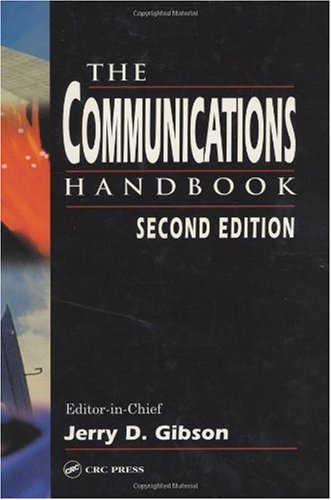
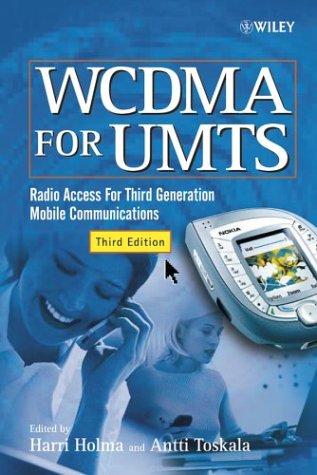
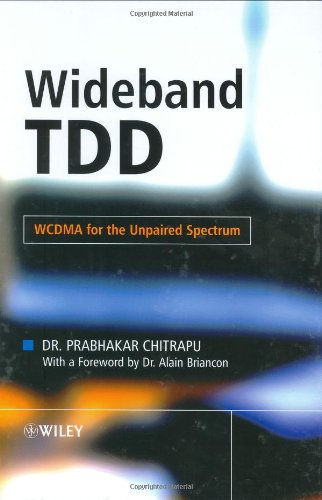
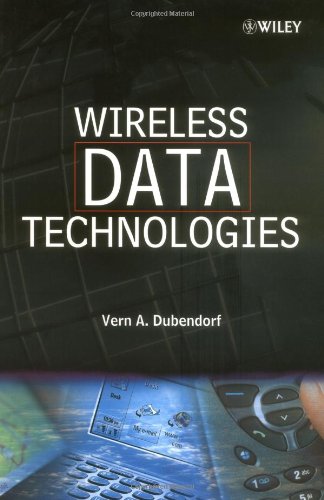
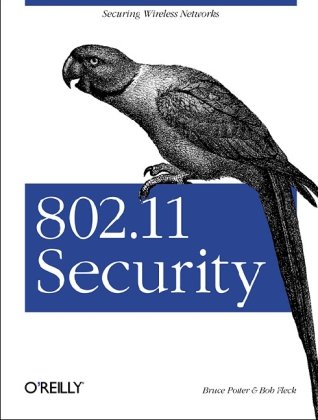


Reviews
There are no reviews yet.